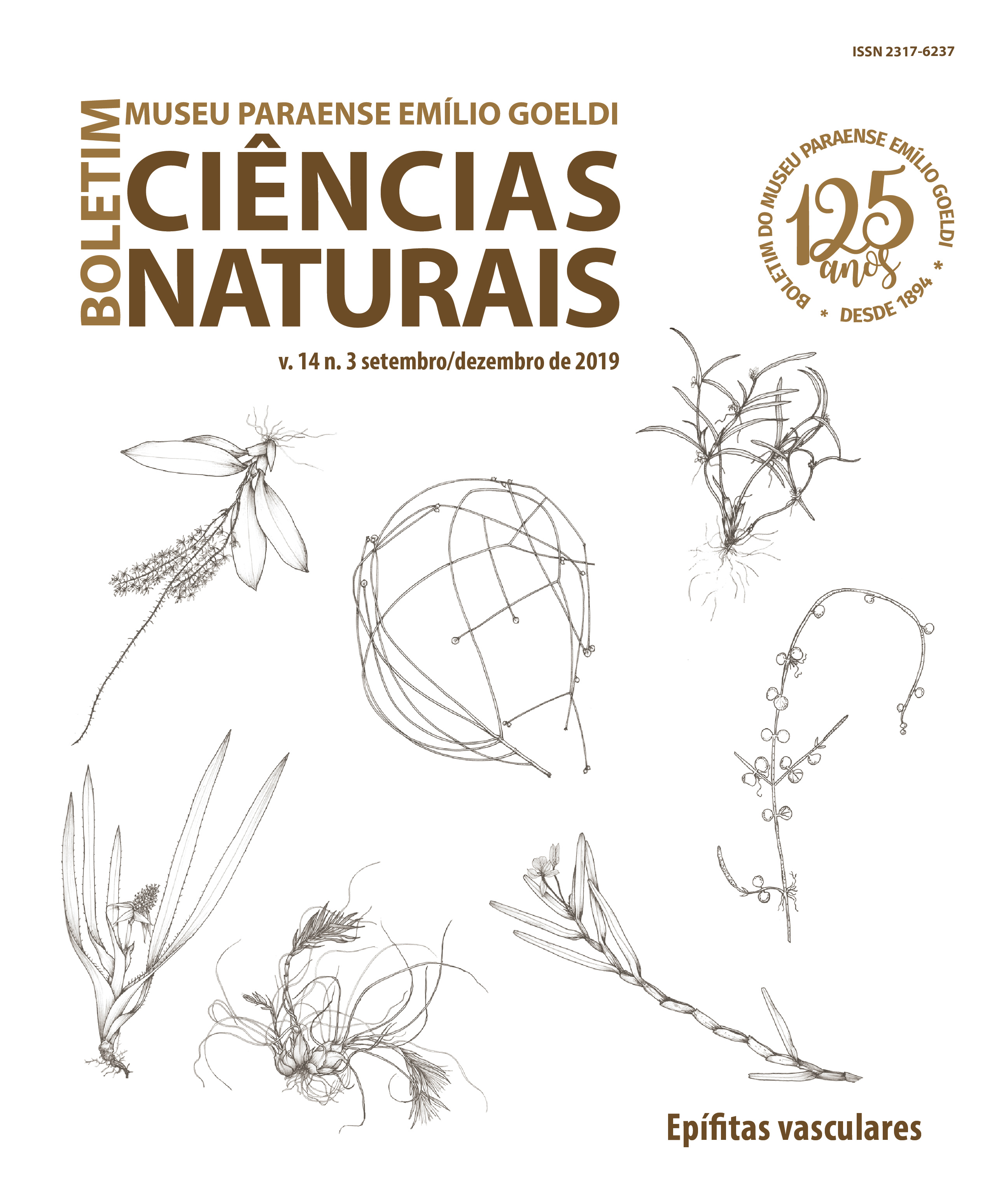Leaf structural characters of Leandra and Miconia (Miconieae: Melastomataceae): taxonomic and ecological significance
DOI:
https://doi.org/10.46357/bcnaturais.v14i3.228Keywords:
Leaf blade anatomy, Indumentum, Leaf anatomy, Midrib vasculature, Petiole vasculatureAbstract
Leaves of six species of Leandra and Miconia were investigated to find structural characters of interest for the classification of species and genera, as well as those that may be related to water stress. Specimens were collected in Guartelá State Park, Brazil, and described morphologically. Anatomical studies were performed on leaf samples embedded in historesin and sectioned through a rotating microtome. Scanning electron microscopy was done on material fixed in glutaraldehyde. Leandra leaves are lanceolate-ovate, while Miconia leaves have oblong-lanceolate and lanceolate blades. Both genera have a vascular system of the petiole composed of collateral, bicolateral, and anficrials bundles. The leaves are hypoestomatic and dorsiventral, varying in the number of strata of the parenchyma. The midrib consists of concentric collateral bundles (U-shaped, V-shaped or circular) or concentric bundles. The morphology of the indument, the structure of the mesophyll, and the vascularization of the midrib are characteristics of interest for the diagnosis of species. They are probably species that avoid drought and consist of plants capable of reducing or compensating for water loss.
Downloads
Published
Issue
Section
License
Publication means fully assigning and transferring all copyrights of the manuscript to the journal. The Liability Statement and
Assignment of Copyrights will be enclosed with the notice of acceptance. All the authors must sign the document and return it to the journal.






